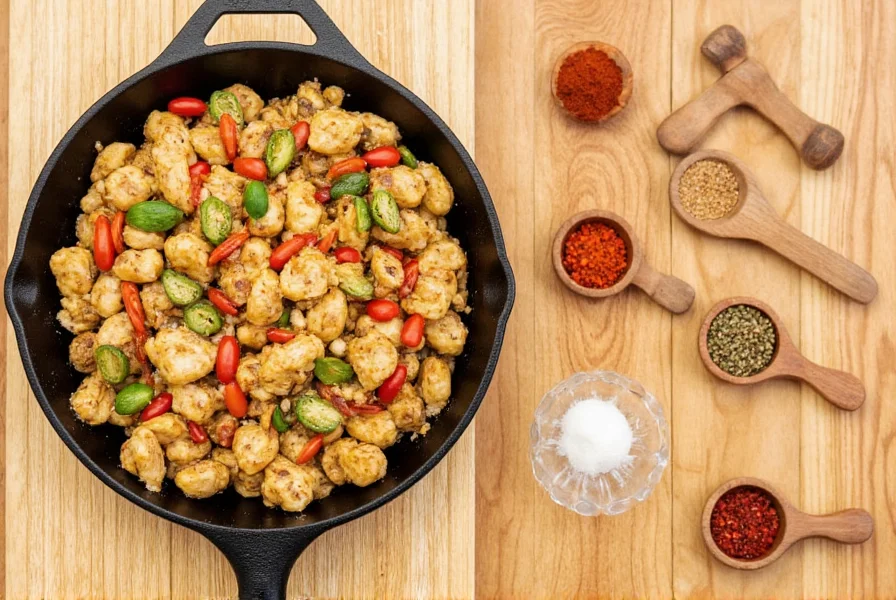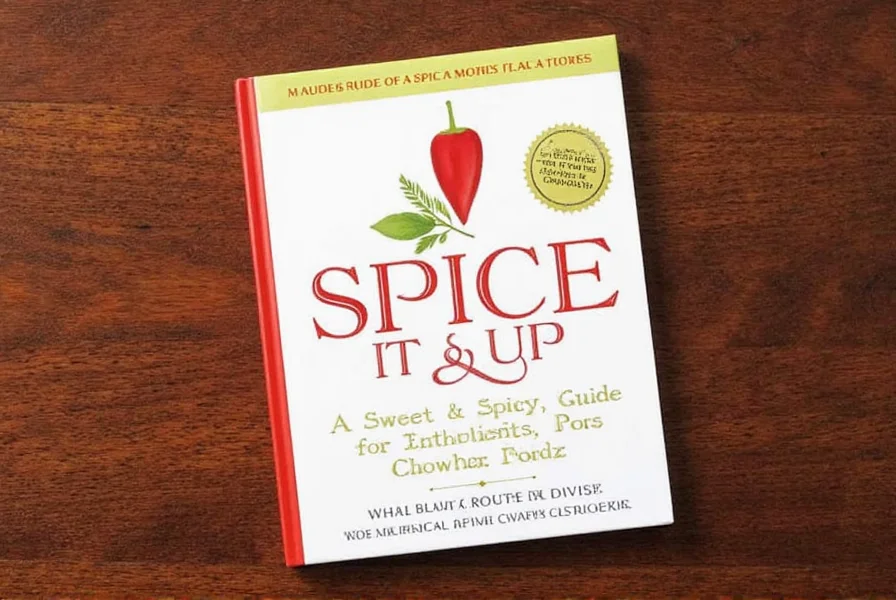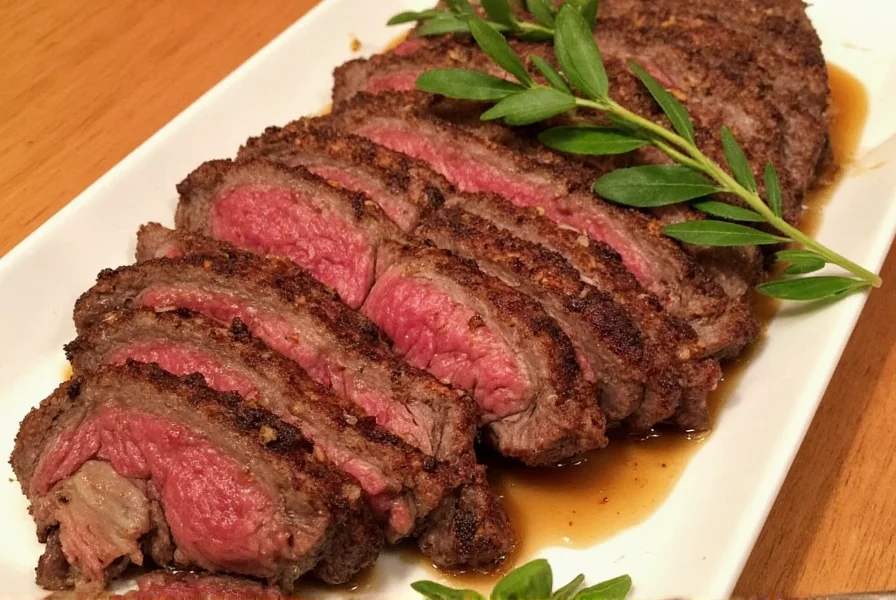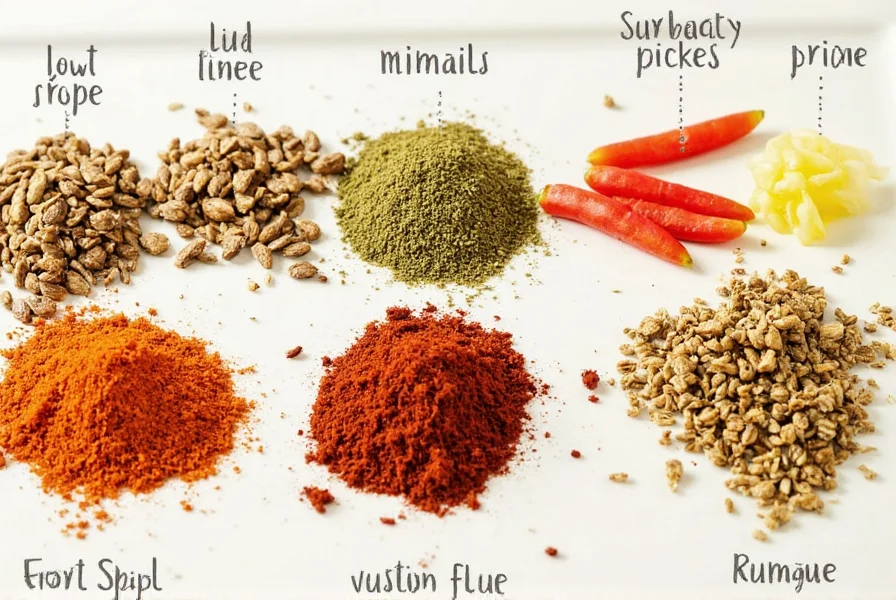Table of Contents
Introduction
Professional chefs rely on precise spice combinations to create authentic, restaurant-quality chicken stir fry. This guide reveals the exact spice ratios and techniques used by culinary experts to balance flavors perfectly. Learn how to elevate your cooking from ordinary to extraordinary with scientifically-backed spice management.
Key Spices for Chicken Stir Fry
Professional kitchens use specific spice ratios to achieve balanced flavor profiles. Here are the exact proportions used by master chefs:
- Ginger – 1 tbsp freshly grated (tenderizes chicken and adds bright citrus notes)
- Garlic – 2 cloves minced (creates aromatic depth without overpowering)
- Soy Sauce – 2 tbsp low-sodium (provides umami foundation)
- Oyster Sauce – 1 tbsp (enhances savory complexity)
- Shaoxing Wine – 1 tbsp (traditional Chinese cooking wine for authentic flavor)
- White Pepper – 1/4 tsp (delicate warmth without visual specks)
- Sesame Oil – 1 tsp (finishing oil for nutty aroma)
- Red Pepper Flakes – 1/2 tsp (adjustable heat element)
These precise ratios create the perfect sweet-salty-sour-spicy balance that defines professional stir fry. Fresh ingredients are non-negotiable for authentic results.
How to Use These Spices Effectively
| Spice | When to Add | Professional Purpose |
|---|---|---|
| Ginger | Immediately after heating oil | Infuses oil with fragrance while tenderizing chicken |
| Garlic | After ginger but before chicken | Releases aroma without burning (maximizes flavor potential) |
| Shaoxing Wine | Before soy sauce | Evaporates raw alcohol taste while adding authentic Chinese flavor profile |
| Soy Sauce | Mid-cooking stage | Creates sauce base and balances other flavors |
| Oyster Sauce | With soy sauce | Enhances umami depth and creates rich texture |
| White Pepper | Final 30 seconds | Preserves delicate warmth without bitterness |
| Red Pepper Flakes | After turning off heat | Controls heat intensity precisely |
| Sesame Oil | After removing from heat | Preserves volatile aromatic compounds |

Culinary experts emphasize that timing is critical. Adding spices too early causes burning, while adding too late loses flavor potential. Always preheat wok to 400°F+ before adding oil for proper Maillard reaction.
Buying Guide: Choosing the Right Spices
Professional chefs source spices from specialized suppliers for maximum freshness. Here's how to select restaurant-quality ingredients:
1. Fresh Ginger
Professional Selection Criteria: Firm texture, smooth skin, strong citrus aroma when squeezed. Avoid wrinkled or soft ginger.
Source Recommendation: Asian specialty markets or spice retailers with high turnover inventory.
Storage: Airtight container in refrigerator for up to 3 weeks. Never freeze fresh ginger.

2. Minced Garlic
Professional Selection Criteria: Whole cloves with tight skin, no green sprouts. Avoid pre-minced jars (oxidizes quickly).
Source Recommendation: Local farmers' markets for fresh garlic or specialty spice shops.
Storage: Store whole bulbs in cool, dark place. Mince only when needed.
3. Soy Sauce (Low-Sodium)
Professional Selection Criteria: Look for "naturally brewed" label, no added MSG. Check expiration date.
Source Recommendation: Japanese or Chinese specialty brands like Kikkoman or Pearl River Bridge.
Storage: Refrigerate after opening to preserve flavor complexity.

4. Oyster Sauce
Professional Selection Criteria: Thick consistency, rich brown color, no artificial thickeners. Check for "no MSG" if preferred.
Source Recommendation: Lee Kum Kee or Megachef brands from Asian grocery stores.
Storage: Refrigerate after opening, use within 6 months.
5. Toasted Sesame Oil
Professional Selection Criteria: Dark amber color, strong nutty aroma. Must be "100% sesame" with no additives.
Source Recommendation: Kadoya or Marukan brands from specialty food stores.
Storage: Refrigerate after opening to prevent rancidity.

Pro Tips for Perfect Chicken Stir Fry
Culinary professionals use these advanced techniques to achieve restaurant-quality results:
- Prep all ingredients before heating: Professional chefs never start cooking until everything is prepped and within reach.
- Use a wok over high heat: Maintain 400-450°F for proper searing without steaming ingredients.
- Marinate chicken for 30 minutes: Soy sauce, ginger, and Shaoxing wine create tender, flavorful meat.
- Stir constantly but not excessively: Professional technique involves quick, continuous motion for even cooking.
- Finish with cornstarch slurry: Creates glossy sauce that clings to ingredients (1 tsp cornstarch + 2 tbsp water).
- Rest before serving: Let stir fry sit 2 minutes off heat for flavors to meld properly.
Frequently Asked Questions
What's the professional chef's secret to perfect chicken stir fry?
The key is precision in spice timing and ratios. Professional chefs follow a strict sequence: ginger first to infuse oil, then garlic, followed by Shaoxing wine to evaporate alcohol, then soy sauce and oyster sauce to create sauce base, and finally white pepper and sesame oil after cooking. This sequence maximizes flavor development while preventing bitterness.
Can I substitute regular soy sauce for low-sodium?
Yes, but reduce quantity by 25% and add 1 tsp rice vinegar to balance saltiness. Professional chefs prefer low-sodium because it allows better flavor control. If using regular soy sauce, add it later in cooking to prevent over-salting.
Why do professional chefs use white pepper instead of black pepper?
White pepper provides subtle warmth without visible specks, maintaining the dish's visual appeal. It also has a more complex flavor profile that complements Asian cuisine better than black pepper. Professional kitchens use white pepper in 90% of stir fry recipes for this reason.
How do I prevent garlic from burning during stir fry?
Add garlic immediately after ginger when oil is hot but not smoking. Cook for only 15-20 seconds while constantly stirring. Professional chefs use this technique: add garlic, then immediately add liquid ingredients (Shaoxing wine or broth) to stop cooking and prevent burning.
What's the best way to store spices for maximum freshness?
Store all spices in airtight glass containers away from light and heat. Refrigerate sesame oil and soy sauce after opening. Whole spices last 2-3 years, ground spices 1-2 years. Professional chefs buy small quantities monthly to ensure freshness. Never store spices near stove or oven.
Can I make authentic stir fry without Shaoxing wine?
Yes, but use 1 tbsp dry sherry or 1/2 tsp rice vinegar + 1/2 tsp sugar as substitute. Professional chefs consider Shaoxing wine essential for authentic flavor, but dry sherry is the closest alternative. Avoid cooking wine (contains salt and additives).
Conclusion
Professional chefs transform simple ingredients into extraordinary dishes through precise spice management. By following these exact ratios, timing techniques, and sourcing guidelines, you can achieve restaurant-quality chicken stir fry at home. Remember: freshness matters more than quantity, and timing is everything. Master these fundamentals, and your stir fry will consistently impress.











 浙公网安备
33010002000092号
浙公网安备
33010002000092号 浙B2-20120091-4
浙B2-20120091-4